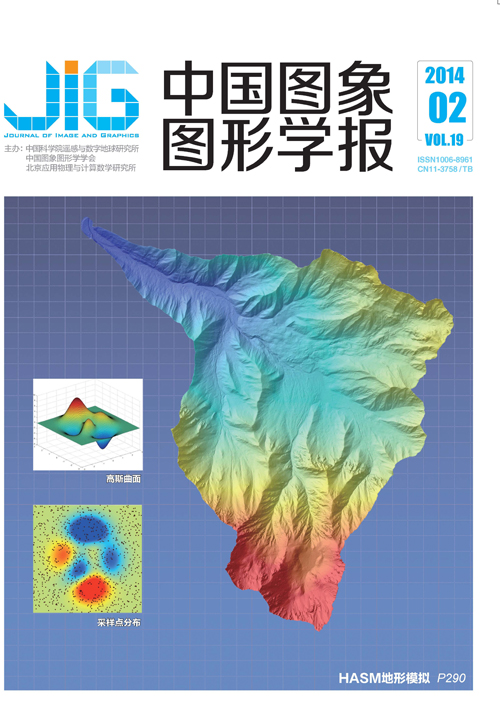
信息量加权的梯度显著度图像质量评价
摘 要
目的 针对信息量加权结构化图像质量评价算法(Information Content Weighted SSIM)对图像局部失真度量能力的不足,提出了一种被称为信息量加权的梯度显著度图像质量评价改进算法(Information Content Weighted Gradient Salience SSIM)。方法 该算法首先根据人眼视觉系统响应亮度刺激的韦伯定律,仅在空域内利用一次滤波快速计算出当前像素点与背景之间的对比度并将其非线性映射为该像素点的视觉显著度。然后,将视觉显著度与梯度特征结合后获得了一种新的被称为梯度显著度局部失真度量(GS-SSIM)并将其替换IW-SSIM算法中的SSIM局部结构化度量。结果 在六大公开基准数据库上完成的大量对比实验表明:对于图像的各种噪声和模糊等类型失真,GS-SSIM较SSIM局部失真度量具有更高的评价准确率。与IW-SSIM算法和其他被广泛引用的图像质量评价算法相比,改进算法评价结果总体上与主观评价结果具有更高的一致性。结论 视觉显著度与梯度特征相结合后所构成的结构化度量能够有效提高经典SSIM结构化度量对图像局部失真度量的准确性,未来可以考虑将人类视觉系统(HVS)的其他特性融入到图像质量评价算法中,以进一步提高算法的准确性。
关键词
Information content weighted gradient salience structural similarity index for image quality assessment
Xu Shaoping1, Yang Rongchang1, Liu Xiaoping1,2(1.School of Information Engineering, Nanchang University, Nanchang 330031, China;2.Department of Systems and Computer Engineering, Carleton University, Ottawa K1S 5B6, Canada) Abstract
Objective Image quality assessment (IQA)aims to use computational models to measure the image quality consistently with subjective evaluations. The well-known structural-similarity (SSIM)index brings IQA from pixel-based stage to structure-based stage,and a multi-scale information content weighting approach based upon a Gaussian scale mixture(GSM)model of natural images,namely information content weighted SSIM image quality assessment algorithm (IW-SSIM). It was proposed recently and achieved significant and consistent performance improvement compared to SSIM-based IQA algorithms. The success of the IW-SSIM approach may be understood as a natural consequence of an effective combination of several approaches that have been proven useful in IQA research. These include multi-scale image decomposition followed by scale-variant weighting,SSIM-based local quality measurement,and information theoretic analysis of visual information content and fidelity. Aiming at improving the local distortion measurement of the IW-SSIM,we propose a novel algorithm called information content weighted gradient salience SSIM (IW-GS-SSIM). Method It is well known that human vision has a nonlinear perception to different physical stimuli (e.g. luminance),which has been theorized and empirically proven by the psychologist E.H. Weber. Weber's Law is computed empirically but its effectiveness had been proven for several application fields. We assume that Weber's law is also suitable for image gradient magnitude,which has been empirically verified by testing subject-rated IQA databases. Because the human visual system (HVS)responds to the brightness stimulus mainly complying with Weber's law,the proposed algorithm only performs one pass filtering to calculate the contrast between the current pixel and its background quickly,which is used as a dimensionless measure of the visual significance of the gradient structure after applying nonlinear mapping. The gradient magnitude combined with Weber visual significance serves basis for characterizing the local image quality. Weber visual significance and the gradient magnitude play complementary roles in characterizing the image local quality,which is used to replace the SSIM local distortion metric of the IW-SSIM algorithm. Result Extensive experiments performed on six benchmark IQA databases demonstrate that as a local distortion metric the GS-SSIM has higher evaluation accuracy than SSIM for image noise and blurring distortion. Our extensive tests across six publicly-available independent image databases verified that IW-GS-SSIM's performances are often superior otherwise similar when compared to the other representative or prominent IQA algorithms in terms of correlation between objective measured quality values and subjective observations,validating that it is a very robust IQA algorithm. Conclusion In summary,we propose a novel gradient magnitude saliency-based IQA algorithm in this paper,namely information content weighted gradient salience SSIM (IW-GS-SSIM). The underlying principle of the IW-GS-SSIM is that the HVS perceives an image mainly based on its salient low-level image feature. Specially,the perception nonlinearity of image gradient magnitude-based local image quality measurement is implemented,i.e. GS,which can better characterize image local quality measure. We believe that our results support the general principle underlying our approach,i.e.,some HVS properties on image gradient should been explored and incorporated into designing the new IQA algorithm. We expect that our works could give new insights to people who are interested in image quality assessment.
Keywords
|



 中国图象图形学报 │ 京ICP备05080539号-4 │ 本系统由
中国图象图形学报 │ 京ICP备05080539号-4 │ 本系统由